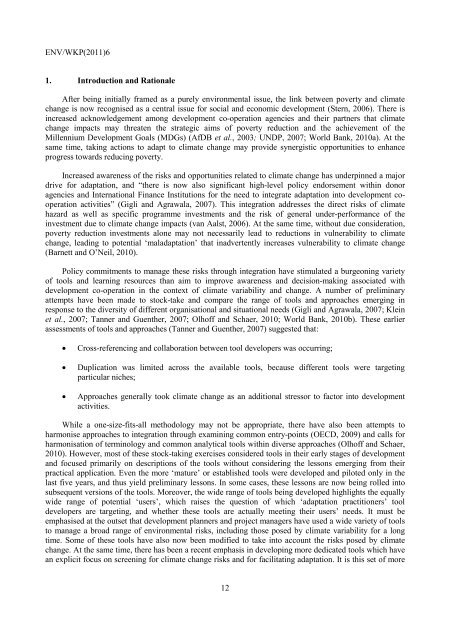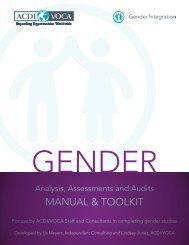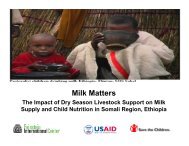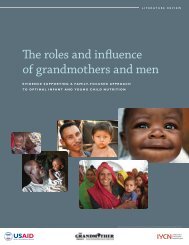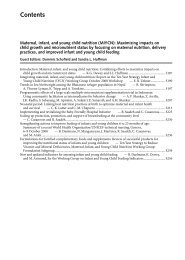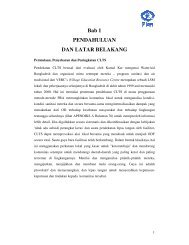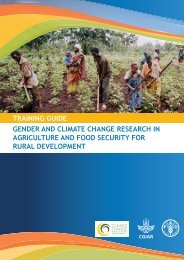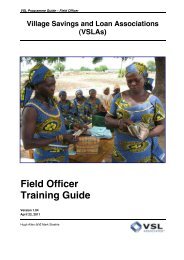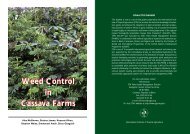Harmonising Climate Risk Management - International Institute for ...
Harmonising Climate Risk Management - International Institute for ...
Harmonising Climate Risk Management - International Institute for ...
- No tags were found...
You also want an ePaper? Increase the reach of your titles
YUMPU automatically turns print PDFs into web optimized ePapers that Google loves.
ENV/WKP(2011)61. Introduction and RationaleAfter being initially framed as a purely environmental issue, the link between poverty and climatechange is now recognised as a central issue <strong>for</strong> social and economic development (Stern, 2006). There isincreased acknowledgement among development co-operation agencies and their partners that climatechange impacts may threaten the strategic aims of poverty reduction and the achievement of theMillennium Development Goals (MDGs) (AfDB et al., 2003; UNDP, 2007; World Bank, 2010a). At thesame time, taking actions to adapt to climate change may provide synergistic opportunities to enhanceprogress towards reducing poverty.Increased awareness of the risks and opportunities related to climate change has underpinned a majordrive <strong>for</strong> adaptation, and “there is now also significant high-level policy endorsement within donoragencies and <strong>International</strong> Finance Institutions <strong>for</strong> the need to integrate adaptation into development cooperationactivities” (Gigli and Agrawala, 2007). This integration addresses the direct risks of climatehazard as well as specific programme investments and the risk of general under-per<strong>for</strong>mance of theinvestment due to climate change impacts (van Aalst, 2006). At the same time, without due consideration,poverty reduction investments alone may not necessarily lead to reductions in vulnerability to climatechange, leading to potential ‘maladaptation’ that inadvertently increases vulnerability to climate change(Barnett and O’Neil, 2010).Policy commitments to manage these risks through integration have stimulated a burgeoning varietyof tools and learning resources than aim to improve awareness and decision-making associated withdevelopment co-operation in the context of climate variability and change. A number of preliminaryattempts have been made to stock-take and compare the range of tools and approaches emerging inresponse to the diversity of different organisational and situational needs (Gigli and Agrawala, 2007; Kleinet al., 2007; Tanner and Guenther, 2007; Olhoff and Schaer, 2010; World Bank, 2010b). These earlierassessments of tools and approaches (Tanner and Guenther, 2007) suggested that:• Cross-referencing and collaboration between tool developers was occurring;• Duplication was limited across the available tools, because different tools were targetingparticular niches;• Approaches generally took climate change as an additional stressor to factor into developmentactivities.While a one-size-fits-all methodology may not be appropriate, there have also been attempts toharmonise approaches to integration through examining common entry-points (OECD, 2009) and calls <strong>for</strong>harmonisation of terminology and common analytical tools within diverse approaches (Olhoff and Schaer,2010). However, most of these stock-taking exercises considered tools in their early stages of developmentand focused primarily on descriptions of the tools without considering the lessons emerging from theirpractical application. Even the more ‘mature’ or established tools were developed and piloted only in thelast five years, and thus yield preliminary lessons. In some cases, these lessons are now being rolled intosubsequent versions of the tools. Moreover, the wide range of tools being developed highlights the equallywide range of potential ‘users’, which raises the question of which ‘adaptation practitioners’ tooldevelopers are targeting, and whether these tools are actually meeting their users’ needs. It must beemphasised at the outset that development planners and project managers have used a wide variety of toolsto manage a broad range of environmental risks, including those posed by climate variability <strong>for</strong> a longtime. Some of these tools have also now been modified to take into account the risks posed by climatechange. At the same time, there has been a recent emphasis in developing more dedicated tools which havean explicit focus on screening <strong>for</strong> climate change risks and <strong>for</strong> facilitating adaptation. It is this set of more12


